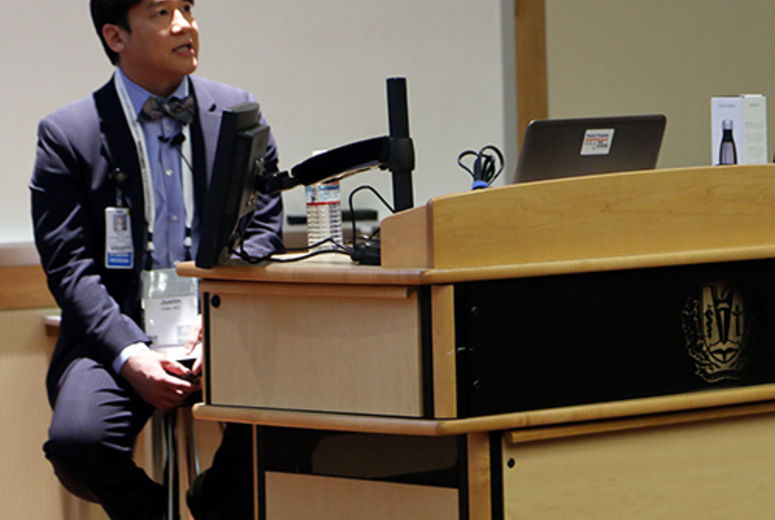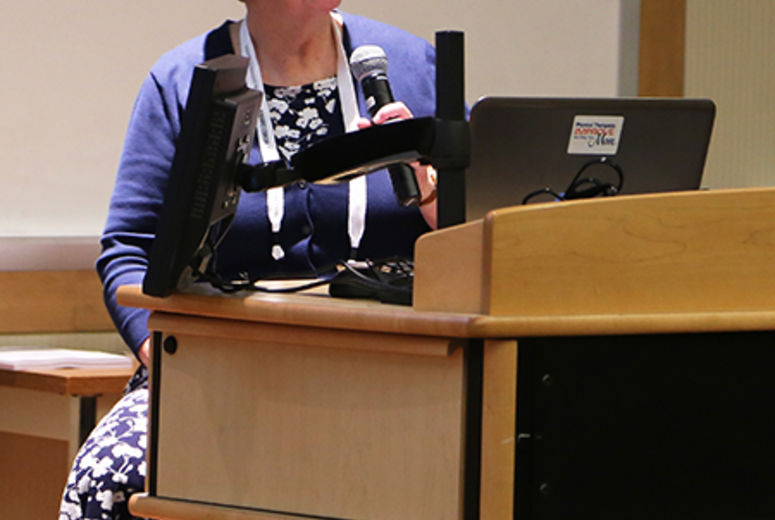
Learning how to manage pain can help you return to doing the things you love.
Whether it’s caused by a toothache, a migraine, a sprained ankle or a backache, pain is like a text the brain sends to let you know something is wrong.
A dentist, a physician, a pharmacist, a nurse and a physical therapist recently shared fascinating facts during a pain management symposium held at Loma Linda University Health.
1. Sometimes people don’t realize that what they’re feeling is pain
While “hurting,” “on fire” and “aching” are words people use to describe their pain, others experiencing pain may say they’re feeling dull or sharp discomfort, burning, itching or a shock-like sensation, says Justin Hata, MD who specializes in pain management at Loma Linda University Health. That tingling you feel could indeed be pain.
2. Tell your doctor or dentist about all of your pain; this is being helpful
Many patients are selective, telling their doctor or dentist only what they think they need to know. Susan Roche, DDS, MS, associate professor, Loma Linda University (LLU) School of Dentistry, recommends telling your dentist if you’re feeling pain anywhere in your body, and if you’re seeing a doctor tell her about pain in your head, neck, jaw or ear. This is because pain can travel, making it challenging to find out what’s causing it. A migraine can cause tooth and facial pain while hand or foot pain can be caused by Temporomandibular Joint Disorder (TMJ), disorders of the jaw.
3. There is no one pill that allows you to return fully to the life you love
When they’re in pain, people stop doing things they enjoy — jogging or sports, gardening or going to the gym. They may stay in bed so their injury can heal.
Doctors, physical therapists, nurses and pharmacists agree, there is no medication or pill for pain that will allow you to return to the life you love. According to Hata, following medical advice which may include quitting smoking, exercising or losing weight is just as important as taking medication.
4. The brain is powerful
Hata points to research that says approximately 30 percent of patients who took a placebo for pain reported that it lowered their pain levels. This is about the same percentage of effectiveness that’s required for a new pain medication to be approved.
5. Just ask! Medication isn’t the only way to control pain.
Imagining what it will be like to walk on the beach on a beautiful summer day toned and strong might help you complete a tough workout, and similar visualization therapies may help control pain, says Shaunna Siler, Phd, MSN, RN, assistant professor of nursing at the LLU School of Nursing.
Ask your doctor about alternative therapies that can help control pain. Suggestions may include acupuncture, biofeedback, hot or cold therapy, massage, paraffin treatments or aquatic therapy.
6. Owww! Did you know it can be important to move when you’re feeling pain?
Sitting or lying down when feeling pain instead of being active causes patients to lose strength. As they work with people who are in pain after injury or surgery, physical therapists encourage safe movement that increases strength. This movement helps speed recovery, according to Pablo Mleziva, DPT, an assistant professor of physical therapy at LLU School of Allied Health Professions.
Movement also creates endorphins, brain chemicals or neurotransmitters that interact with opiate receptors in the brain, lessening pain. Endorphins have the same effect as morphine and codeine.
7. Don’t overdose — read labels
While doctors prescribe safe dosages of pain medication, a patient who also takes over-the-counter cold or flu meds can damage their liver so seriously that a transplant is needed.
Kathleen Hill-Besinque, PharmD, MSEd, a professor of the LLU School of Pharmacy and past president of the California Pharmacists Association, says that it’s important to tell your doctor what you’re taking for pain and always read labels before taking over the counter drugs.
8. Extra help is available
Did you know lower back pain is one of the top reasons people live with a long-term disability? If you feel pain for more than three months, your doctor may refer you to a pain specialist, Hata says.
9. You don’t have to live with pain. Here’s a tip…
Some patients would rather live with pain than experience the side effects of opiates. Before making that tough decision, Hata suggests patients try alleviating constipation that may be a side effect of opiates by eating prunes or drinking prune juice.
10. A new law in California is saving lives
Accidentally taking too much of an opioid, combining it with alcohol, additional drugs or abusing it can lead to overdose. This can include breathing becoming depressed, the heart stopping, brain damage and even death.
In 2016, a law took effect in California that lets anyone in California purchase the opioid overdose rescue drug Naloxone from pharmacies without a prescription. Naloxone has been found to be so effective that law enforcement officers in California are prohibited from confiscating it.
According to Hill-Besinque, one life is saved for every 164 Naloxone kits sold.
When someone is experiencing overdose, pharmacists recommend administering a dose of Naloxone even before calling 911. After 10 minutes have passed with no improvement, it is safe to give a second dose. However, if a person has Naloxone they must let someone else know where they keep it because when it’s needed it will be impossible for them to administer it to them self.






